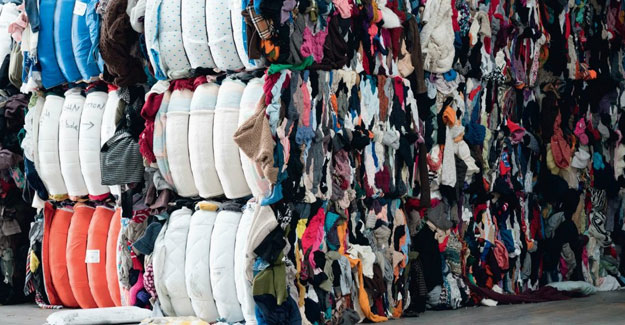
Global Used Clothing Industry Is Part Of the Recycling Solution
Four associations involved in the global used clothing industry have teamed up to "dispel myths" and "set the record straight" about textile recycling. The associations - including the Secondary Materials and Recycled Textiles Association (SMART), the European Recycling Industries' Confederation (EuRIC) - Textiles, Textile Recycling Association (TRA) and the Bureau of International Recycling (BIR) - Textile Division - believe there is a "common misconception" that second-hand clothing exported to developing countries partially ends up being discarded right away. They add the clothing not sold directly in the market gets passed down the supply chain and ends up selling in other smaller markets throughout the region, suggesting that no profitable business will spend money on packing, shipping and distributing a product only to have it end up in landfill. The associations say the used clothing industry is growing right now "in response to the increasing demand" for affordable products and environmentally-conscious consumers and add in many cases, the used garments are also "higher quality and last longer" than cheaper new products. Jackie King, Executive Director of SMART said: "Textile reuse and recycling is the solution, not the problem. Second-hand clothing exported to countries is sorted and graded for customer needs or preferences. Suppliers do not ship waste; it is not cost-effective. Customers demand quality clothing for resale, not waste; the semantics of 'waste' really means what they couldn't sell. The reality is if clothing doesn't sell, it is often shipped to other worldwide markets for resale or recycling - not thrown away." The associations cite an extensive study conducted by the Institute of Economic Affairs in Kenya in April 2021 on the used clothing industry and its contributions to the Kenyan economy. It found the used clothing industry directly employs around two million people, in addition to thousands of jobs created and supported in ancillary sectors, such as the transportation industry. In addition, 91.5% of households in Kenya are said to purchase second-hand clothes - for every 100 used garments bought, it means 60 - 85 new garments are displaced, which results in a significant reduction in greenhouse gas emissions and the use of toxins that would have been caused by the production of new textiles.
Textile Excellence
If you wish to Subscribe to Textile Excellence Print Edition, kindly fill in the below form and we shall get back to you with details.








